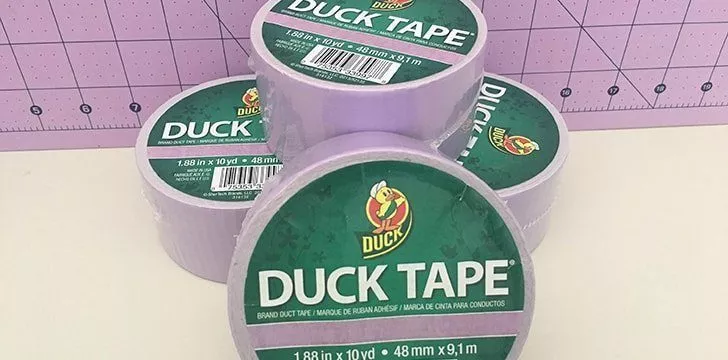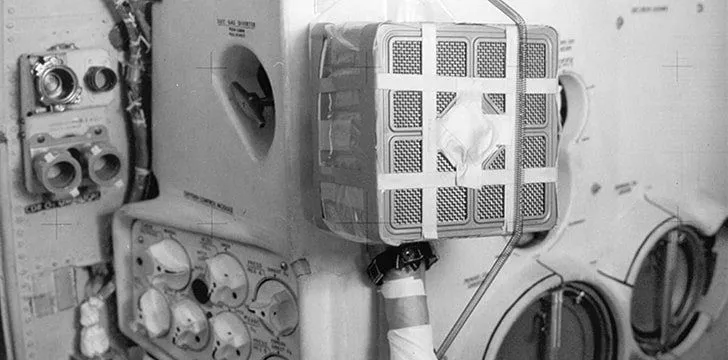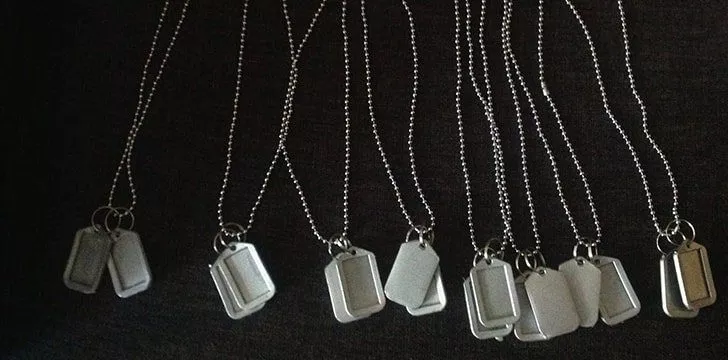Were you aware that duct tape was utilized in the Gulf War to mend and shield helicopter rotor blades?
Everyone has used duct tape for something at some point. It is, without a doubt, one of the most useful everyday tools that can be used in life.
So, at some point, you must have wondered: where did it originate? And for what practical purposes was it originally designed?
Well, let’s discover together!
The Origins of Duct Tape

A woman named Vesta Stoudt first conceived of duct tape.
She was the mother of two Navy servicemen who worked at the Green River Ordnance Plant in Illinois, packing cartridges used for rifle-launched grenades.
These cartridges were packed in boxes of eleven, taped, and waxed to make them waterproof and damp-proof.
Only the thin paper tape would frequently break, making it difficult for soldiers to open the cartridges in the heat of battle.
Vesta proposed a strong, cloth-based tape to close the seams and to make easy pull tabs.
Although many people thought it was a good idea, no one ever took steps to change the tapes. This changed when Vesta wrote a letter to FDR himself with the suggestion.
Duct Tape Uses in The Military

Roosevelt, who also had serving sons, forwarded the letter to the War Production Board, which put out a request for a cloth-based waterproof tape.
A subsidiary of Johnson & Johnson responded to this request with a rubber-based adhesive material applied to a durable duck cloth backing.
It worked perfectly as a water-resistant sealant.
The US Army used it to repair windows, seal ammo crates, and even as a type of temporary bandage for sealing wounds.
At that time, it was a standard military green color, and it was known as “duck tape” rather than “duct tape.” This was due to the waterproof duck-cloth backing that the adhesive was applied to.
It was also known as “hurricane tape” or “100 miles an hour tape.” This was due to its ability to withstand massive air pressures, but we’ll return to that one later.
When the war ended, soldiers brought the tape back with them, and the resulting housing boom propelled it into the commercial market.
It became widely known as an excellent way to hold pipes and heating or air conditioning ducts together, being remarked as “duct tape” and achieving its trademark silver color.
Duct Tape in the Vietnam War

When the Vietnam War began, duct tape once again saw action on the front lines.
Soldiers would frequently use duct tape to attach their magazines together. They even used it to tape their dog tags and loose equipment together to prevent them from rattling about.
However, with the military push for air mobility in Vietnam, a new use for duct tape was discovered: repairing and balancing broken helicopter rotor blades.
During the Vietnam War, helicopters frequently played a role in intense battles. The rotor blades would frequently get shot up, causing issues with the helicopter’s aerodynamic integrity and control.
During landings and refueling, crews would cover impact holes in the rotors with duct tape until new rotor blades could be obtained. This method proved effective due to the tape’s high wind resistance, earning it the nickname “100 miles an hour tape.”
Application of Duct Tape in the Gulf Wars

Duct tape was also utilized as a repair tool for helicopters during both Gulf Wars. The edges of the rotor blades were frequently eroded and worn down by desert sandstorms. Technicians would apply duct tape to the rotor edges, safeguarding them from desert wear and tear.
Duct Tape in Space

Astronauts have brought duct tape on every space mission since the Genesis mission. Even during the ill-fated Apollo 13 mission, the crew utilized duct tape to fix their broken carbon dioxide filters, which saved their lives. And that’s the history and the numerous fascinating uses of duct tape throughout the years!
FAQ
1. How was duct tape invented?
Duct tape was invented during World War II by Johnson and Johnson as a waterproof sealing tape for ammunition cases. It was made of a rubber-based adhesive and a fabric backing that was strong and durable.
2. What are some common uses for duct tape?
Duct tape has many uses and can be used for anything from repairing a broken item to creating a makeshift shelter. Some common uses include repairing leaky pipes, fixing a broken car bumper, creating a DIY wallet, and even removing lint from clothing.
3. What makes duct tape so strong?
Duct tape is strong due to its fabric reinforcement and rubber-based adhesive. The fabric backing provides added strength and durability, while the adhesive creates a strong bond that can withstand pressure and tension.
4. Can duct tape be used for electrical wiring?
While duct tape can be used for many things, it is not recommended for electrical wiring. Duct tape is not designed to withstand the heat and current of electrical wires and can pose a safety risk if used in this way.
5. Can duct tape be used on skin?
While duct tape has been used as a temporary solution for removing warts and other skin ailments, it is not recommended for prolonged use on skin. The adhesive can cause irritation and even damage the skin.
6. What are some creative uses for duct tape?
Some creative uses for duct tape include creating artwork, making clothing and accessories, decorating household items, and even building furniture. The possibilities are endless with a little imagination and some duct tape!
7. Is duct tape environmentally friendly?
Duct tape is not considered to be environmentally friendly. It is not recyclable and can take hundreds of years to decompose in a landfill. However, some companies are now producing eco-friendly duct tape made from natural materials like bamboo and cotton.

Zayn Anderson is a prolific writer with a passion for uncovering the world’s intriguing facts. Armed with an insatiable curiosity, he delves into various subjects, from history and science to nature and technology.
